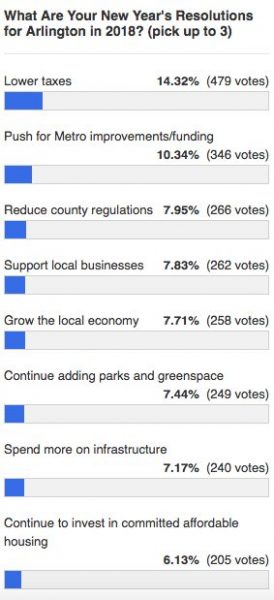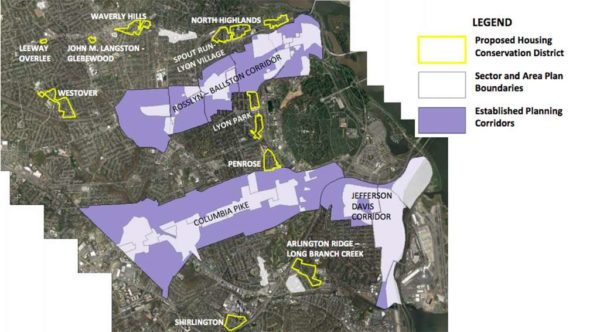 Peter’s Take is a weekly opinion column. The views and opinions expressed in this column are those of the author and do not necessarily reflect the views of ARLnow.com.
Peter’s Take is a weekly opinion column. The views and opinions expressed in this column are those of the author and do not necessarily reflect the views of ARLnow.com.
Last Friday afternoon, Arlington County issued its annual information on the assessed value of Arlington property as of January 1.
As per that release, the top line numbers are:
- Overall increase of 1.9 percent (compared to 3.0 percent last year)
- Average residential property up 3.8 percent
- Most commercial property values up, but office values down 6.8 percent
Office properties represent about 18 percent of the overall tax base.
Discussion
As the county’s press release acknowledges, last Friday’s news is sobering:
This past fall, County officials projected a 3.2 percent increase in the value of all residential and commercial real estate–and a comparable increase in tax revenues. With actual growth of 1.9 percent, the County will face a greater shortfall as it works to develop a balanced budget.
At the end of 2017, the County Board directed the County Manager to “propose a balanced budget within the existing tax rate” for FY 2019, after having raised the tax rate by 1.5 cents for CY 2017. Within that appropriate framework, the tough budget choices the Board is going to have to make in 2018 are tougher after last Friday’s news.
The good news is that the public already has provided many constructive ideas to help the Board make these tough choices. Late last fall, the Manager asked Bryna Helfer and her Engage Arlington team to solicit the public’s suggestions to help prepare the FY 2019 operating budget. Some of the public’s responses have been compiled and posted on the Engage Arlington website.
For example, check out the public’s suggestions grouped there under these headings:
- Fiscal problems have roots in poor planning and decision-making
- Focus on the big $$$ issues, not the micro stuff
- Smart spending
- Close-out funds
- Laundry list of budget-related suggestions
Another interesting indicator of the public’s priorities can be found in an online poll conducted by ARLnow.com beginning January 2. A large number of responses — 3,345 — were recorded.
Here are the top 8 vote-getters from among the 16 options offered in that poll:
With the important caveat that the foregoing results are not derived from a statistically-valid public opinion survey, they are nevertheless useful indicators of the relative priorities of a large number of recorded votes.
As I wrote in December, it’s also important for the County Board and our community to address FY 2019 budgeting tasks in the context of longer-term financial modeling.
The Board should direct the Manager to develop financial projections out to 2040 for both capital and operating budget spending, utilizing at least three assumptions: most likely case; optimistic case(s); pessimistic case(s). The results and assumptions underlying this exercise should be published, and the public should be invited to comment on those results.
Conclusion
Arlington should set its budget priorities:
- giving careful consideration to the public’s priorities
- using data-driven information regarding what the County (and APS) are likely to be able to afford in the long term




